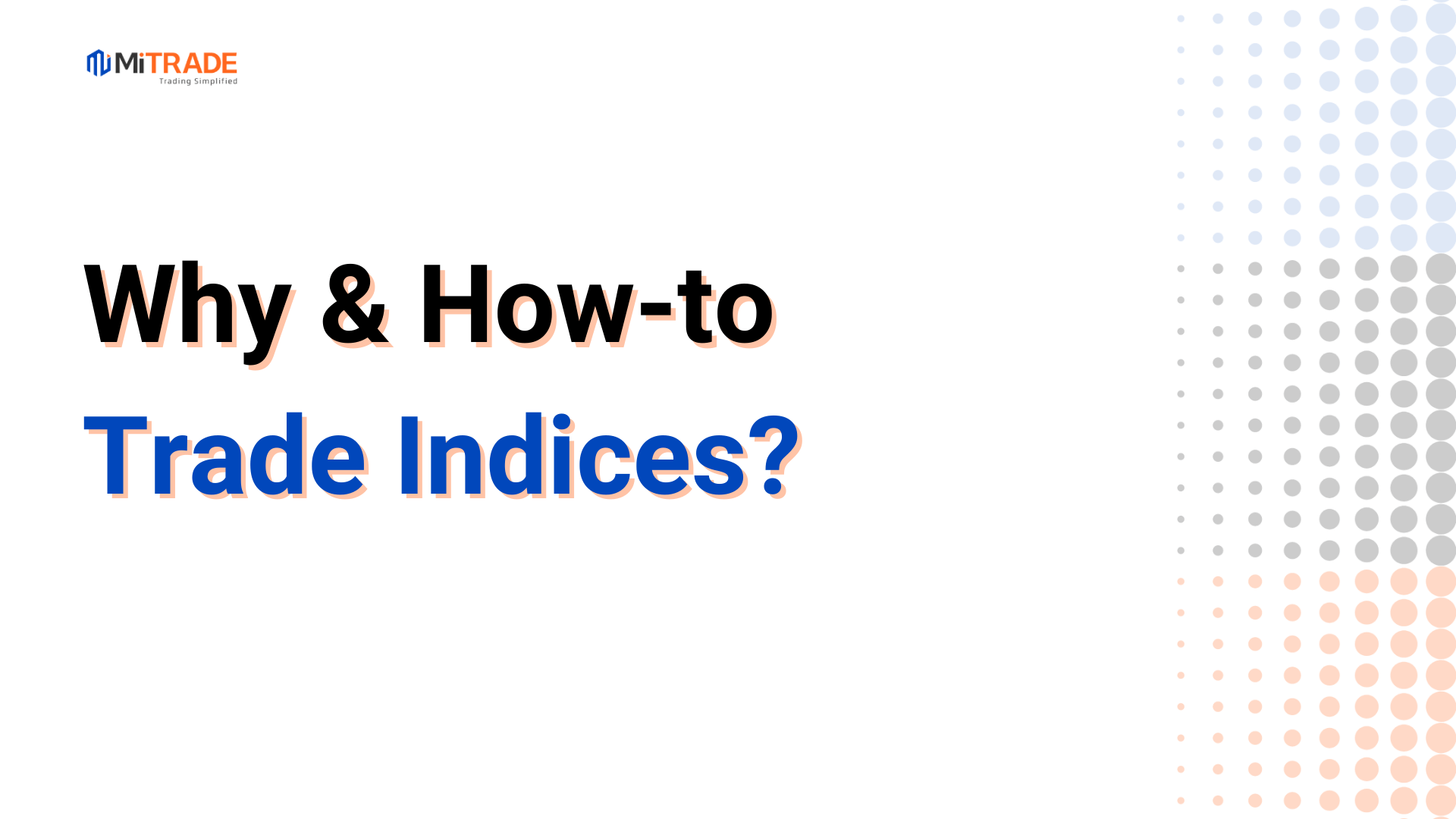
Trading indices has become increasingly popular among investors looking to diversify their portfolios and manage risk. This guide will explore the reasons for trading indices and provide a step-by-step approach on how to get started.
1. Why Trade Indices?
One of the biggest benefits of trading indices is the ability to avoid stock-specific risk. When you buy a single stock, your investment is entirely exposed to the volatility of that one company. In contrast, trading indices allows you to mitigate this risk, as the performance of an index is based on a "basket" of stocks, representing a broader market segment.
Additionally, stock index trading typically requires a large investment amount due to high trading thresholds. However, trading stock index Contracts for Difference (CFDs) enables traders to enter the market with smaller capital requirements, allowing them to buy a diverse range of stocks without needing substantial upfront investment.
Another advantage of trading index CFDs is flexibility. Unlike traditional stocks, where you can only profit when prices rise, index CFDs allow you to take both ‘long’ and ‘short’ positions. This means you can potentially profit from both rising and falling index prices, providing more opportunities in varying market conditions.
2. How to Trade Indices
Create an Account: If you don’t have an existing account with us, you can register here. Simply, create an account and log in. If you don’t have an existing account with us, you can register here.
Select Your Index: Choose among popular indices in the US, Europe, Asia, and Australia, such as the Australia 200, NAS100, Hong Kong 50, or Germany 30.
Decide on Market Direction: Determine whether to take a buy (long) or sell (short) position based on your market analysis.
Set Your Exit Points: Establish your Take Profit (TP) and Stop Loss (SL) levels to manage your risk effectively.
Monitor Your Trade: Keep an eye on your position and the market conditions to make informed decisions.
3. Potential Risks to Note When Trading Indices
While trading indices can offer various benefits, it is important to be aware of potential risks, including:
Market Volatility: Indices can be affected by economic events, geopolitical issues, and changes in market sentiment, leading to rapid price fluctuations.
Leverage Risks: Trading with leverage can amplify both gains and losses, so it's essential to use leverage cautiously and understand its implications.
Liquidity Risks: Some indices may experience lower trading volumes, which could impact your ability to enter or exit positions at desired prices.
Economic Factors: Changes in economic indicators, interest rates, and inflation can influence index values and should be monitored closely.
By understanding these risks and employing sound trading strategies, you can enhance your trading experience and potential profitability in the index market.
4. Summary
Trading indices allows investors to gain exposure to entire markets or sectors, providing diversification and a way to speculate on economic trends. However, potential risks include market volatility, leverage effects, and geopolitical factors. Understanding these risks is crucial for effective index trading.
Before making any trading decisions, it is important to equip yourself with sufficient fundamental knowledge, have a comprehensive understanding of market trends, be aware of risks and hidden costs, carefully consider investment targets, level of experience, risk appetite, and seek professional advice if necessary.
Furthermore, the content of this article is solely the author's personal opinion and does not necessarily constitute investment advice. The content of this article is for reference purposes only, and readers should not use this article as a basis for any investment decisions.
Investors should not rely on this information as a substitute for independent judgment or make decisions solely based on this information. It does not constitute any trading activity and does not guarantee any profits in trading.
If you have any inquiries regarding the data, information, or content related to Mitrade in this article, please contact us via email: insights@mitrade.com. The Mitrade team will carefully review the content to continue improving the quality of the article.






